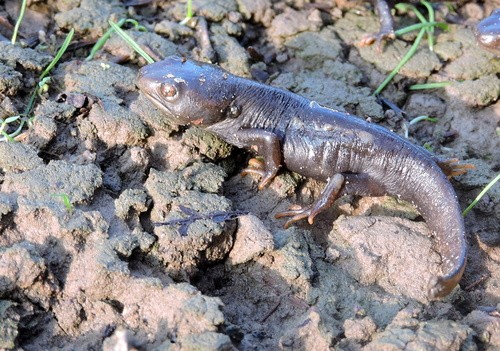Red knobby newt
A species of Tylototriton, Also known as Himalayan newt, Mandarin salamander, Himalayan salamander Scientific name : Tylototriton verrucosus Genus : Tylototriton
Red knobby newt, A species of Tylototriton
Also known as:
Himalayan newt, Mandarin salamander, Himalayan salamander
Scientific name: Tylototriton verrucosus
Genus: Tylototriton
Content
Description General Info
 Photo By subhajit_roy , used under CC-BY-NC-ND 4.0 /Cropped and compressed from original
Photo By subhajit_roy , used under CC-BY-NC-ND 4.0 /Cropped and compressed from original Description
The Himalayan newt (Tylototriton verrucosus) is a species of newt found in the Indian subcontinent and Southeast Asia. Other common names include: crocodile newt, crocodile salamander, Himalayan salamander, red knobby newt.
General Info
Lifespan
8-14 years
Diet
Red knobby newt predominantly feeds on small invertebrates and their larvae. They specifically favor copepods, cladocerans, tubificid worms and chironomid larvae, exhibiting an opportunistic feeding behavior.
Appearance
Red knobby newt is a medium-sized amphibian with a robust body and rough, warty skin. Its color varies from dark brown to black, often with orange markings on its head, limbs, and tail. Prominent ridges line its back, head, and tail. It has a flat head and a distinct, upturned snout. The tail is compressed laterally, ending in a pointed tip. Both sexes look similar, though females are slightly larger.
Behavior
Red knobby newt is a largely nocturnal, terrestrial newt, known for its unique skin-secreting defensive behavior against predators. It exhibits semi-aquatic tendencies during breeding season, with males displaying territorial aggression for optimal breeding sites. This species is seen to spend long durations hiding among leaf litter or in burrows to avoid desiccation.
Population
Decreasing
Scientific Classification
Phylum
Chordates Class
Amphibians Order
Salamanders Family
True salamanders Genus
Tylototriton Species
Red knobby newt